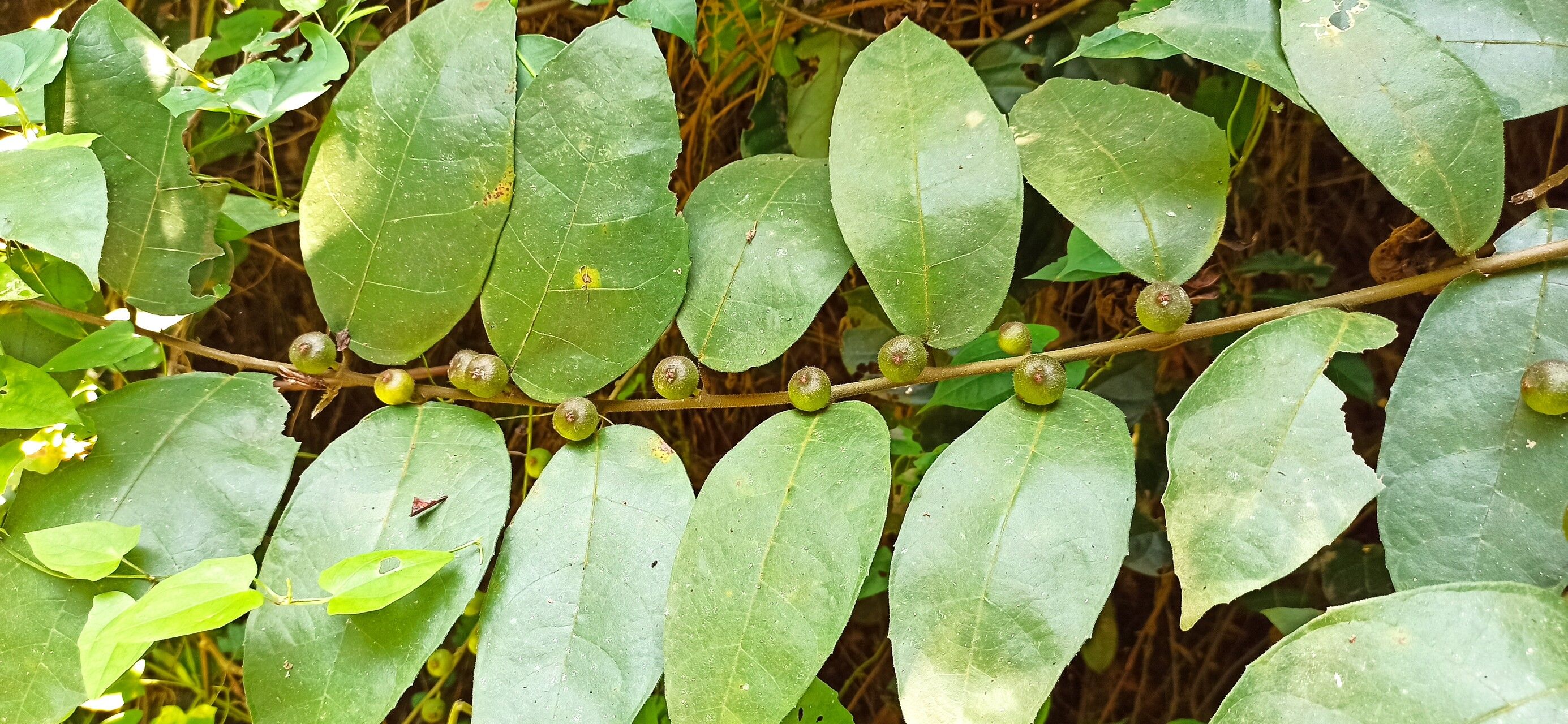Ficus asperifolia

|
|
Ficus asperifolia Common Names: Sandpaper Plant, Rough-Leaf Fig Scientific
Classification Kingdom: Plantae Clade: Tracheophytes Clade: Angiosperms Clade: Eudicots Clade: Rosids Order: Rosales Family: Moraceae Genus: Ficus Species: F. asperifolia Binomial Name: Ficus asperifolia Miq. Synonyms: Ficus acutifolia Hutch., Ficus cnestrophylla Warb., Ficus colpophylla Warb., Ficus irumuensis De Wild., Ficus manicariarum Standl., Ficus paludicola Warb., Ficus pendula Welw. ex Hiern, Ficus scolopophora Warb., Ficus storthophylla Warb., Ficus storthophylla var.
cuneata De Wild., Ficus urceolaris Welw. ex Hiern, Ficus urceolaris var.
bumbana Hiern, Ficus warburgii H.J.P.Winkl., Ficus xiphophora Warb. Morphological Description Ficus asperifolia is a small to medium-sized tree or shrub, typically 5–20 m
tall, with a spreading canopy. Key features include: · Leaves: Large, ovate to elliptic, 10–30 cm long, rough-textured
(sandpaper-like), spirally arranged · Stems: Woody, with grayish-brown bark, exuding milky latex when cut · Fruits: Figs, 1–2 cm in diameter, green to yellowish, borne in pairs
or clusters, edible · Flowers: Tiny, enclosed within the fig (syconium), pollinated by
specific fig wasps The rough leaves,
reflected in its name "asperifolia," are a distinguishing trait. Distribution and Habitat Ficus asperifolia thrives in: · Native Range: Tropical Africa (Senegal to Uganda, south to Angola and
South Africa) · Habitat: Evergreen rainforests, riverine woodlands, savanna edges;
0–1,100 m altitude · Soil/Climate: Moist, well-drained soils; humid tropical, 1,000–2,500 mm
rainfall It’s abundant along
riverbanks and marshy areas (Watcho et al., 2017). Ethnopharmacology Traditionally, various
parts of Ficus asperifolia have been utilized for medicinal purposes: in Cameroonian
traditional medicine, decoctions of dried fruits are employed to address female
infertility. Scientific studies have indicated that extracts from these fruits
may enhance fertility by promoting the growth of reproductive organs and
amplifying the effects of testosterone in animal models. The plant is
traditionally used to treat inflammatory conditions and pain. Research has
demonstrated that methanol leaf extracts of F. asperifolia exhibit significant anti-inflammatory
and analgesic effects, supporting its traditional applications. Traditionally,
the plant has been used to treat various infections. Studies have shown that F.
asperifolia contains vital phytochemicals, suggesting its potential in herbal remedies. Traditional uses,
supported by studies, include: · Respiratory Issues: Nigerian Hausa use bark decoction for
coughs · Gastrointestinal Disorders: Cameroon Bamileke chew leaves for ulcers;
antispasmodic activity in rats (Shi et al., 2018). · Infections: Yoruba apply leaf paste for wounds. · Fertility: Decoction of dried fruits reverses infertility in Cameroon;
increased implantation sites in rats (p<0.05 at 100 mg/kg) (Ngadjui et al.,
2013). · Purgative/Anthelmintic: Leaves used in Ghana; laxative effect in mice
(PROTA, 2019). Scientific validation is
ongoing; consult professionals before use. Phytochemistry Key compounds include: · Triterpenoids: β-Amyrin, euphol; anti-inflammatory (Ngadjui et al., 2013). · Flavonoids: Quercetin derivatives; antioxidant (Mwine & Van Damme,
2011). ⚠ Toxicity Profile: Latex irritates skin/eyes due to ficin;
ingestion may cause nausea (LD₅₀ ~1,500 mg/kg in rats) (Shi et al., 2018). Additional Information · Ecological Role: Figs feed birds, bats, and monkeys; hosts
fig wasps (Verkerke, 1987). · Cultural Use: Planted as shade trees in Cameroon due to large leaves
(PROTA, 2019). · Androgenic Effects: Extracts boost testosterone in rats
(Watcho et al., 2017). References
External Links More Pictures |
|
| Compounds of Ficus asperifolia |
|
| References |